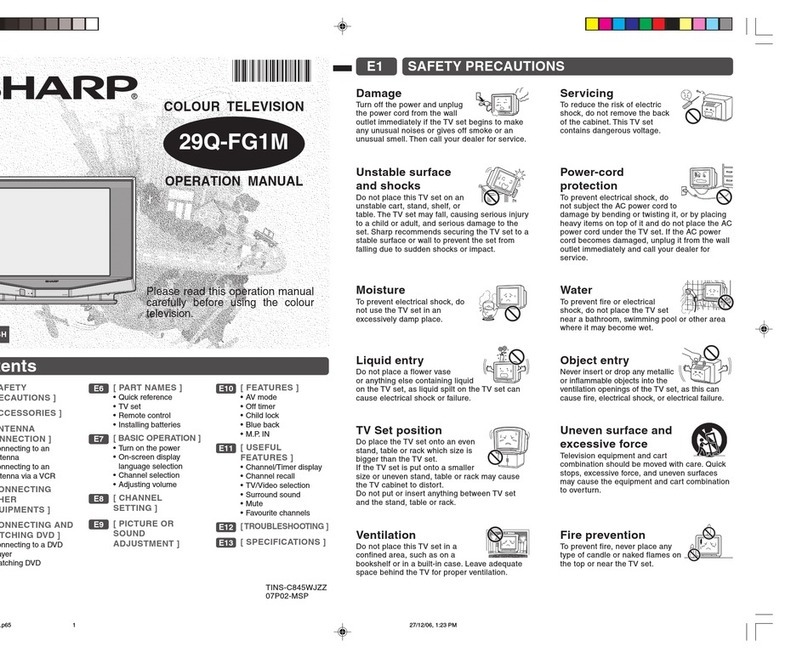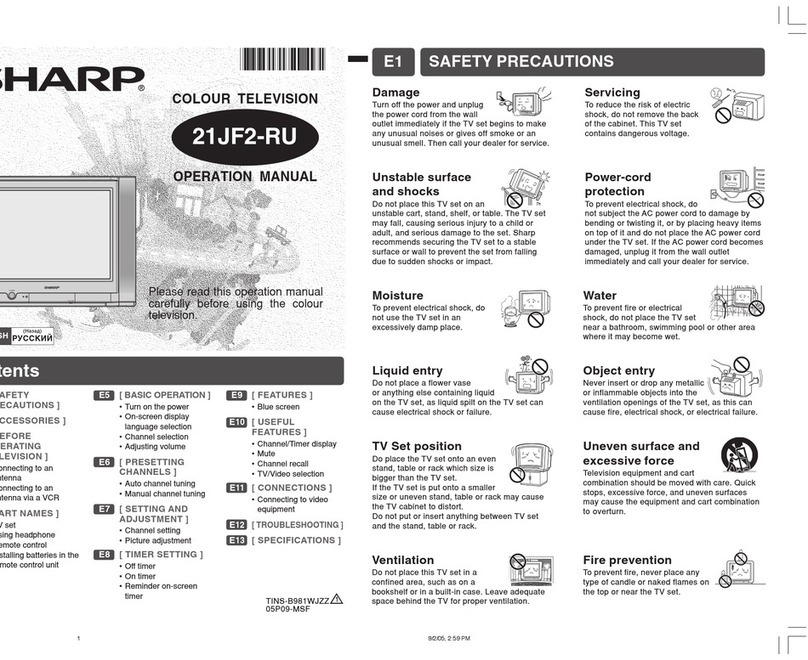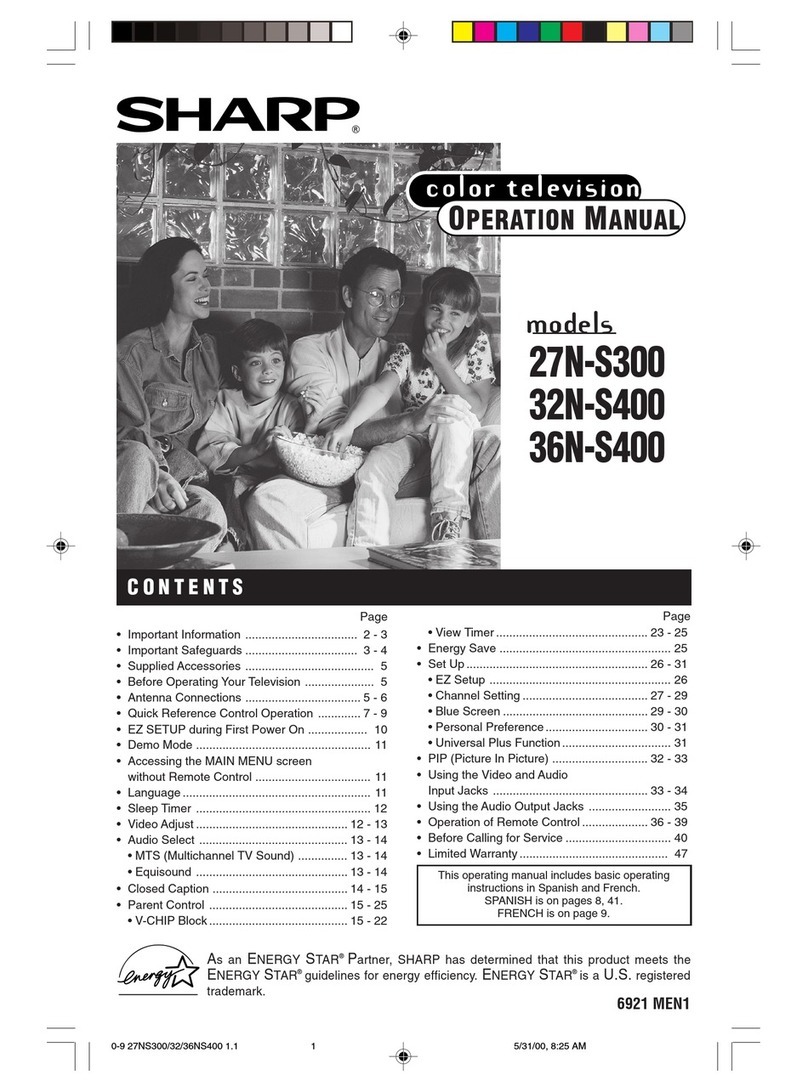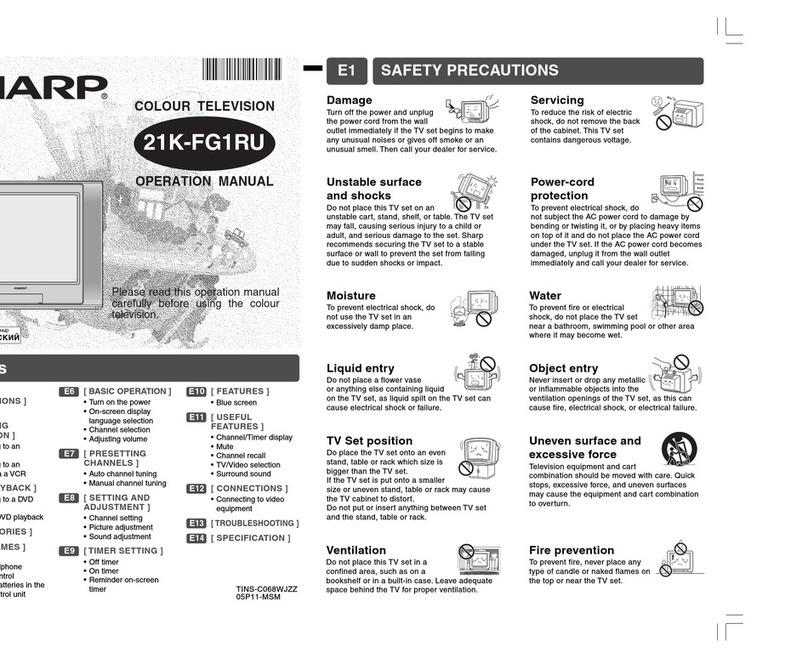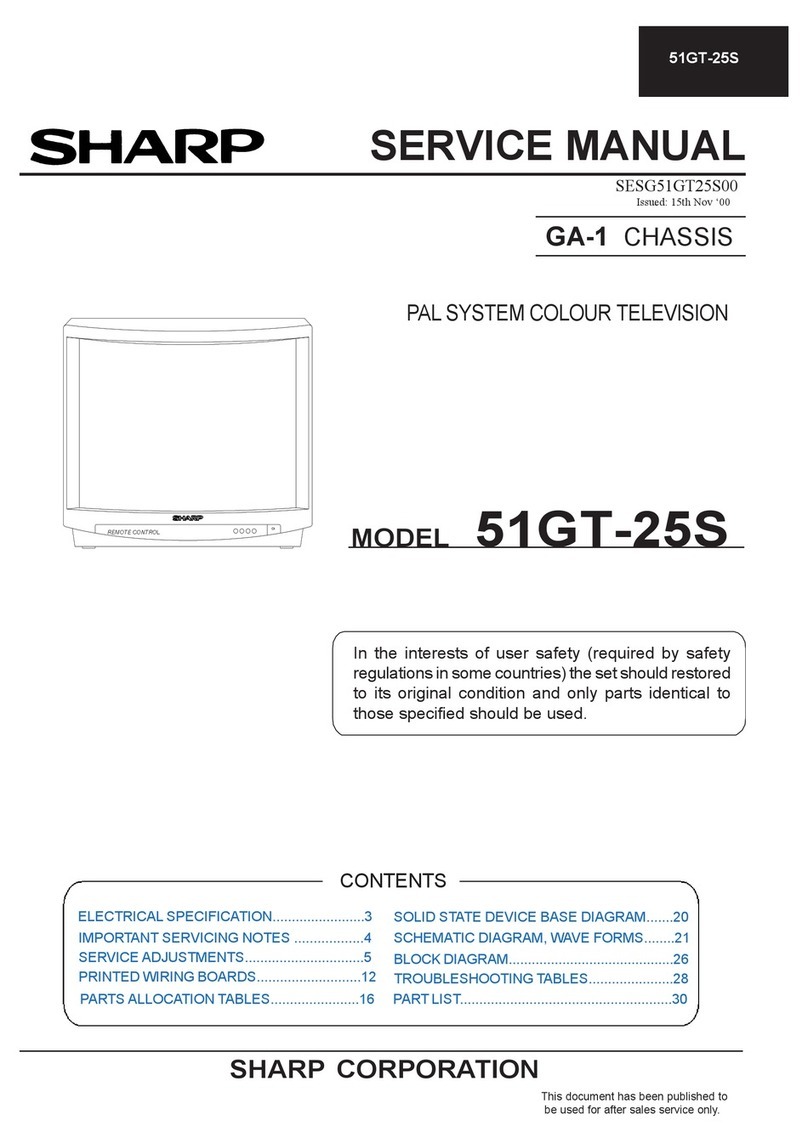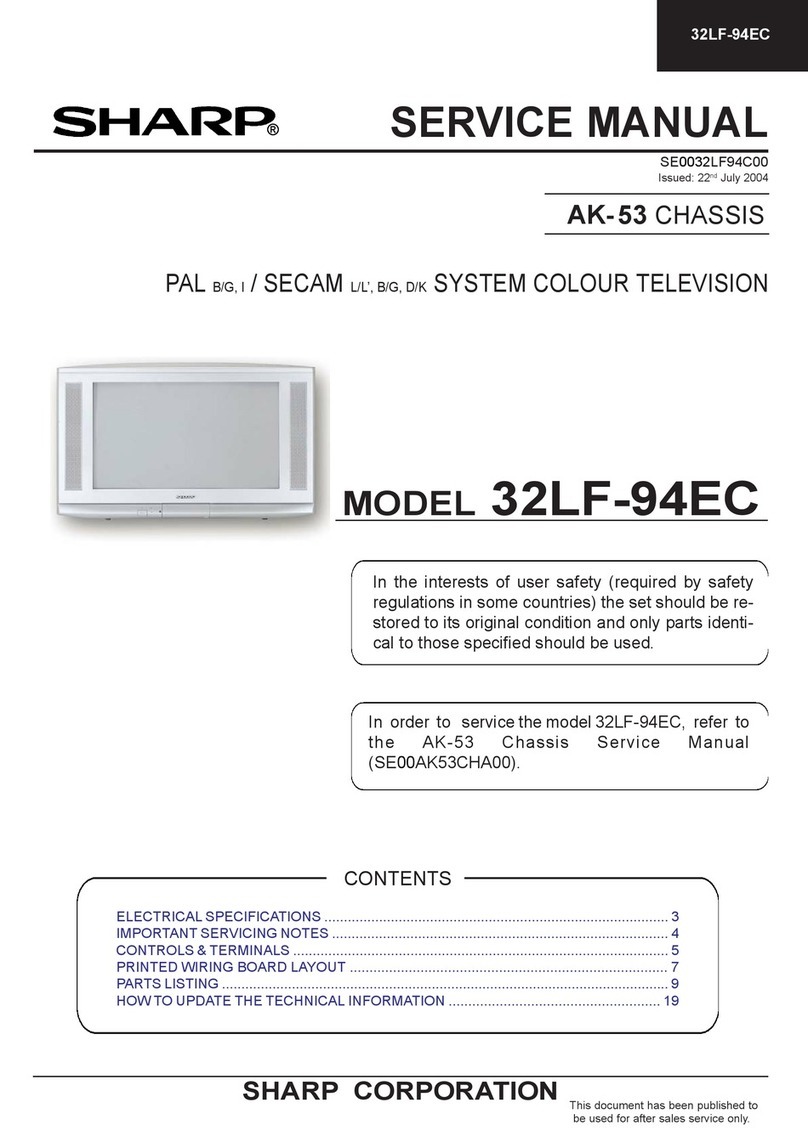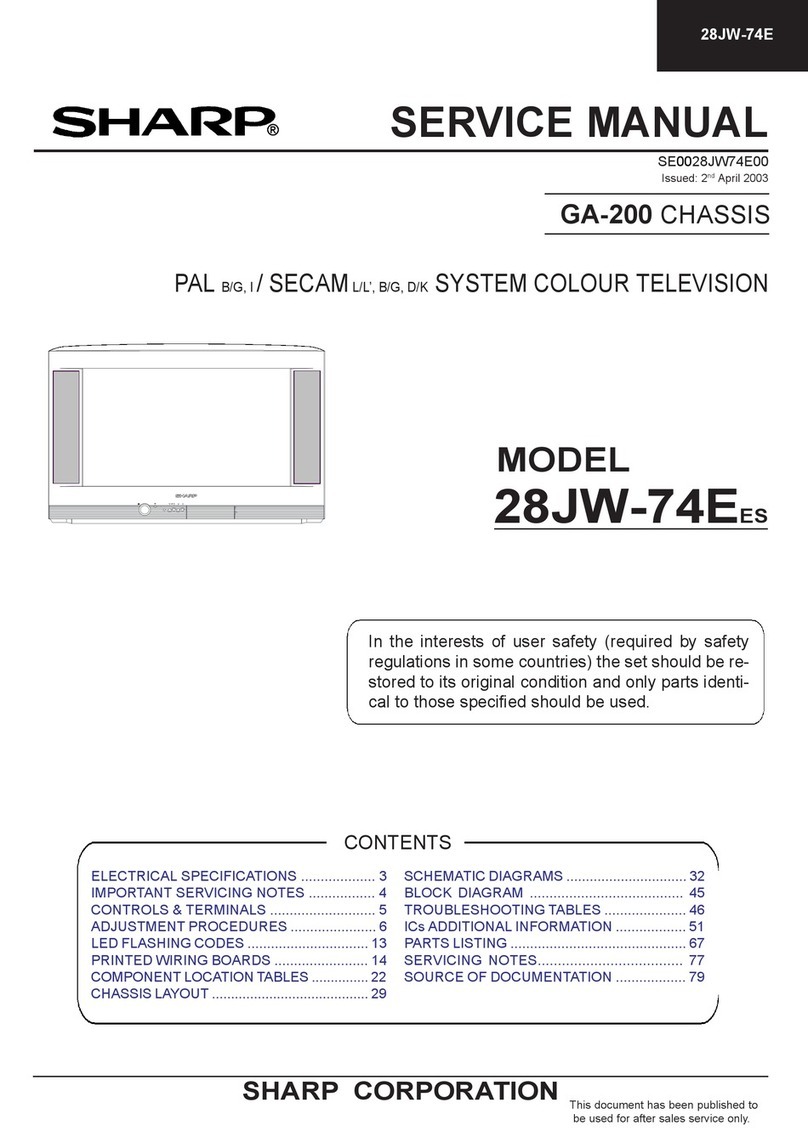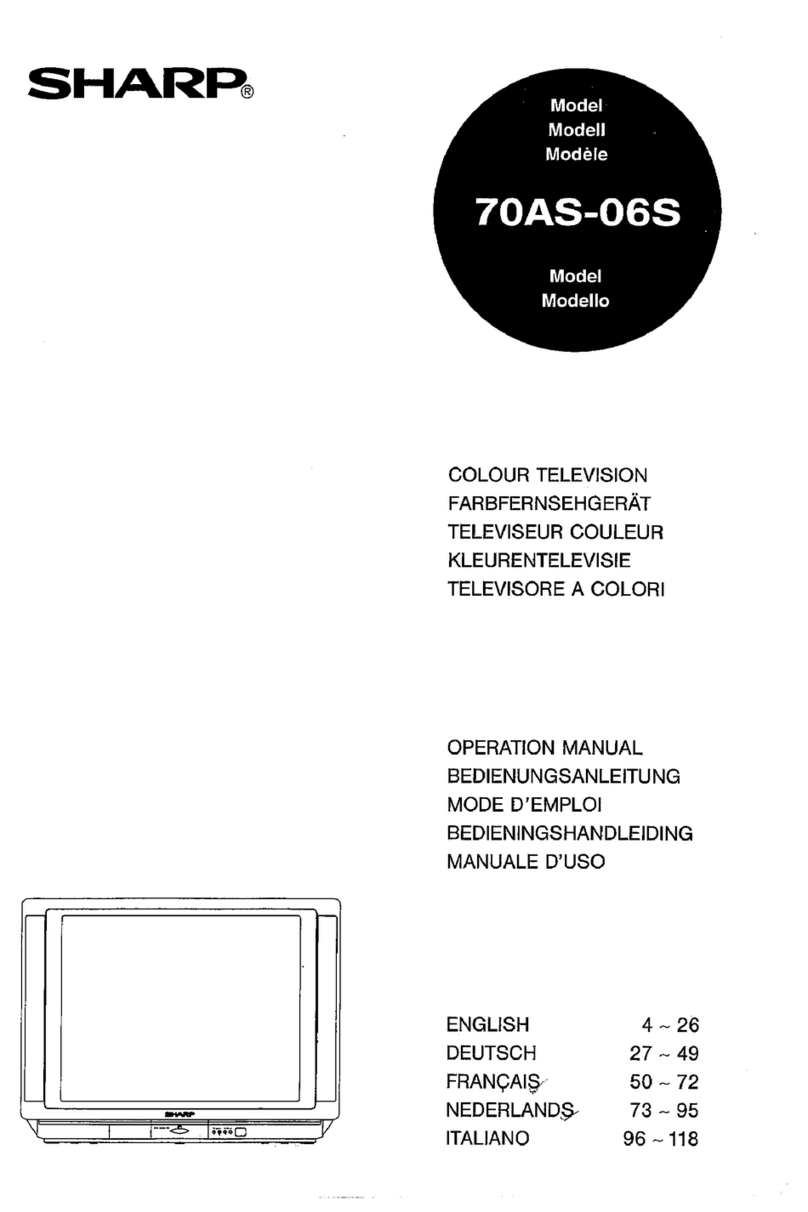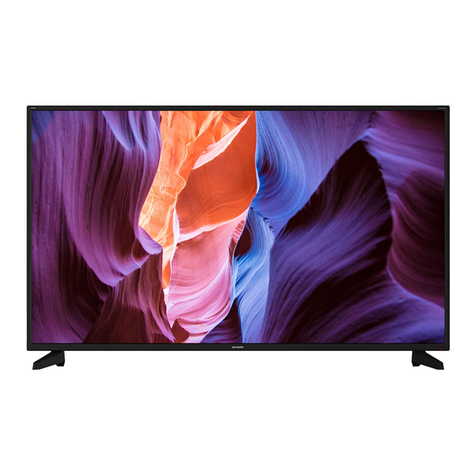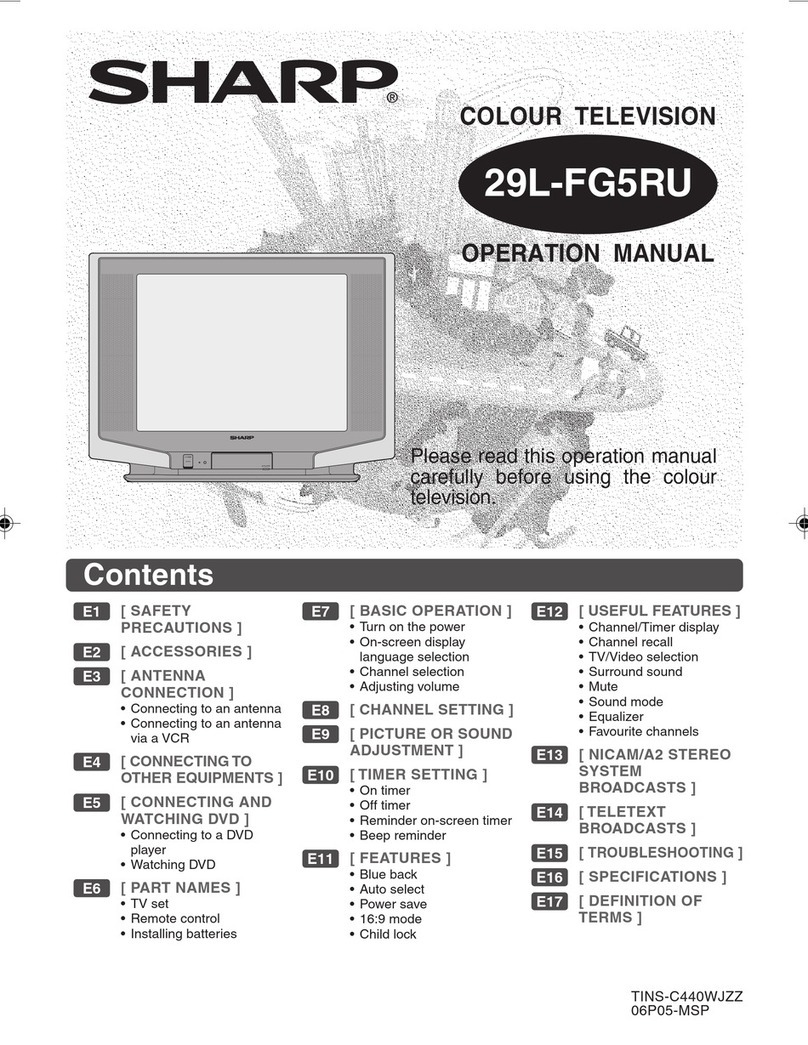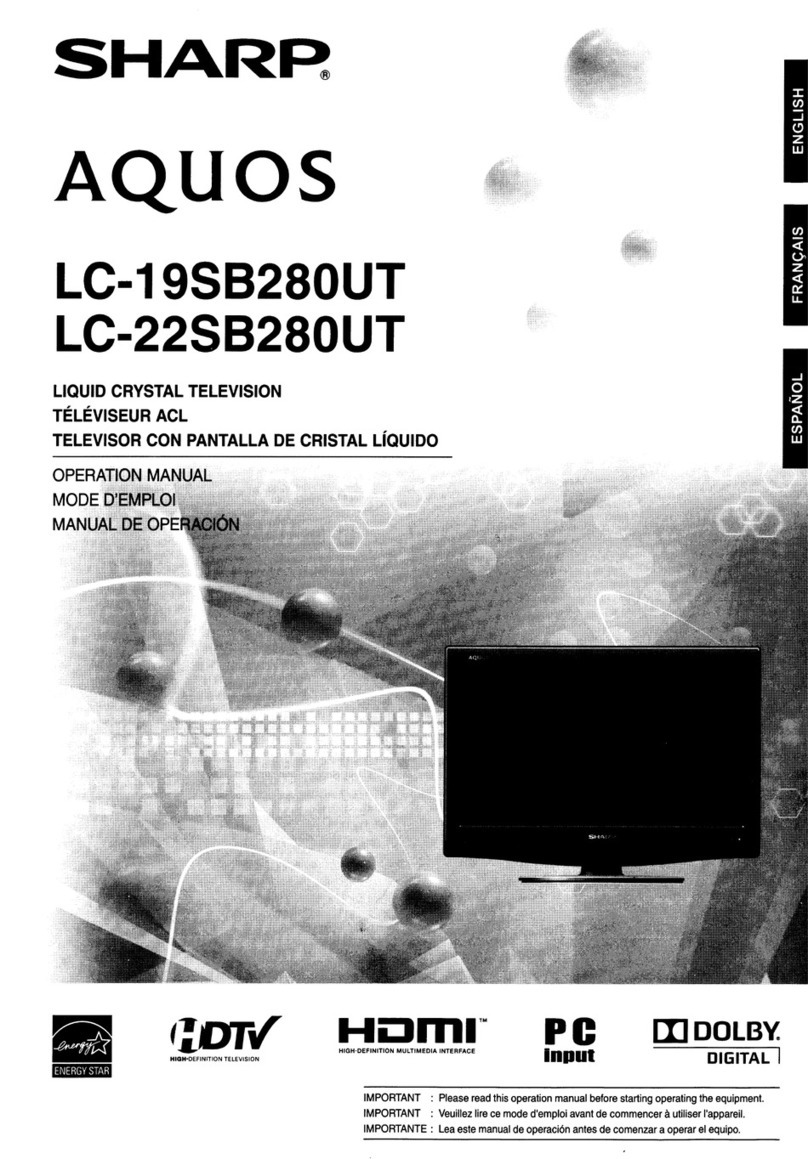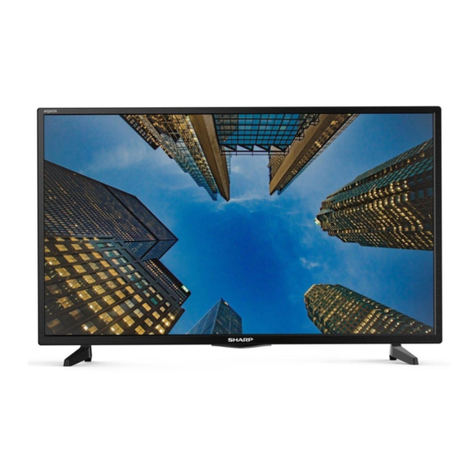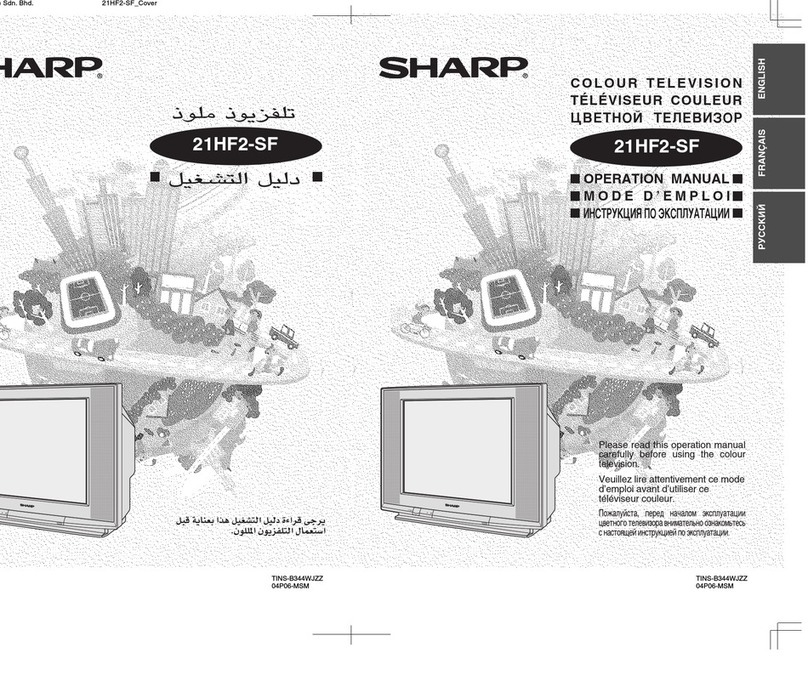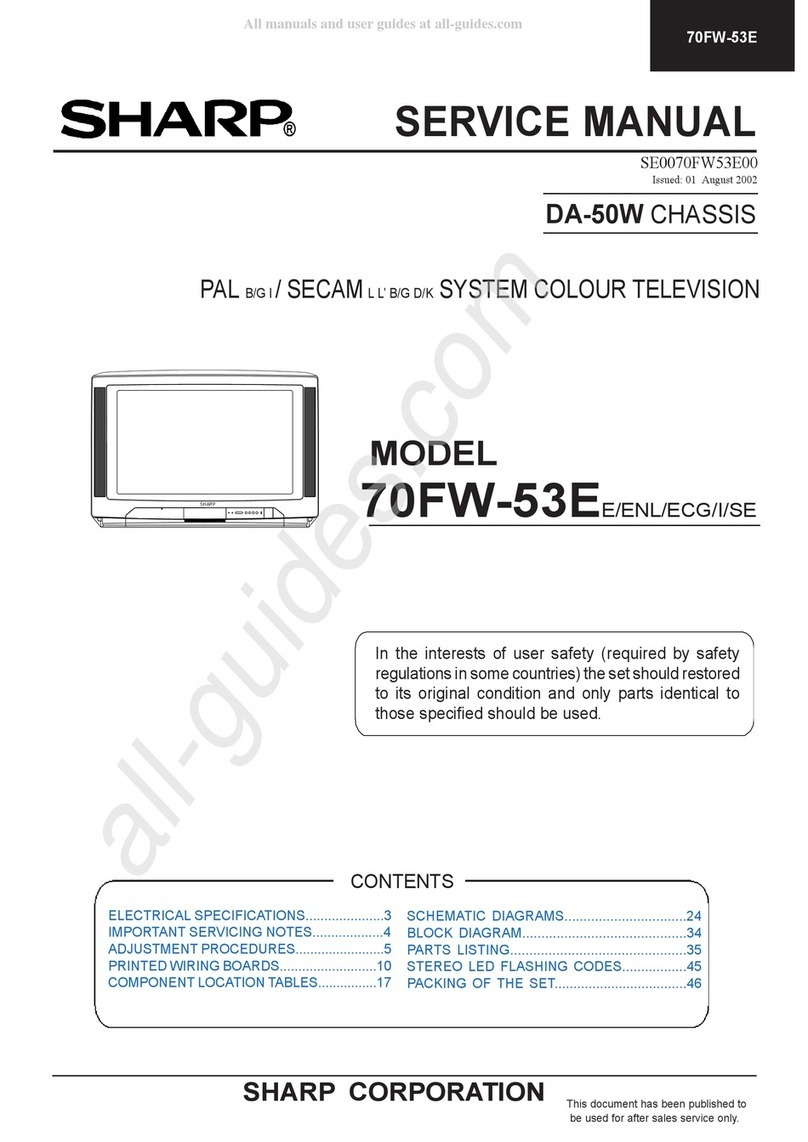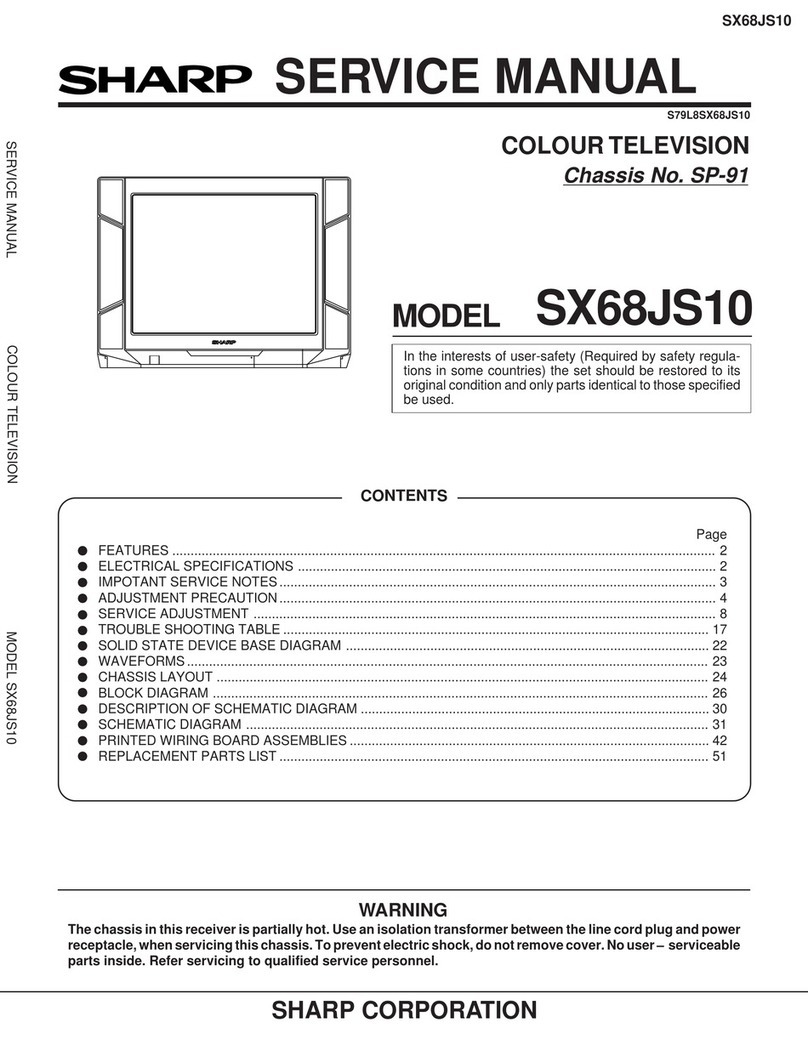9
25WG3
1.Switch TV to VIDEO MODE, Blue Back:
OFF, Without Video Signal.
2.Connect the oscilloscope to TP851.
(Use a 10:1 probe)
Range: 500mV/div
Sweep Time: 5ms/div
Press "DC" mode
3.Using the remote controller, call
NORMAL mode.
4.Adjust Screen VR so that the tip of
signal reach 2.5Vdc ±0.1Vdc.
CUT OFF , WHITE BALANCE, SUB - BRIGHT, & FOCUS ADJUSTMENT.
NO
ADJUSTMENT POINT
1
CRT Cut - OFF ADJ.
(I
2
C BUS CONTROL)
ADJUSTMENT CONDITION/PROCEDURE
WAVEFORM OR OTHERS
*Before adjustment ,make
sure that this adjustment
with the initial bus data
"White Point (G)" &
"White Point (B)" are 32.
Figure 5
5.Receive the MONOSCOPE PATTERN
signal.
6.Call the "BKGD" in SERVICE mode.
7.Adjust "White Point (G)", "White Point
(B)" data to have a colour temperature
of 12300k (White) Note.
2 White Balance ADJ.
(I
2
C BUS CONTROL)
Note :White Point (G)
UP " 2 " KEY
DOWN " 5 " KEY
White Point (B)
UP " 3 " KEY
DOWN " 6 " KEY
As the above data can be
UP / DOWN.
*12300k x=272
y=275
(Minolta Colour Analyzer
CA-100)
8.Receive the "CROSSHATCH
PATTERN" Signal.
9.Call the "SUB BRI" in SERVICE mode.
10.Adjust the "SUB-BRI" bus data, so that
the No. 2 line inside the window area
will disappear.
Note: Before starting this adjustment,
warm up the unit for 30 minutes or
longer at a beam current of 1200 ~
1300µA.
3 SUB- BRIGHT ADJ.
(I
2
C BUS CONTROL)
Figure 6
11.Receive the "MONOSCOPE PATTERN"
Signal.
12.Press P-NORMAL key.
13.Connect the DC Milliammeter between
TP601 (-) and TP602 (+). (Full Scale:
3.0 mA Range).
14.Beam current Must be 1200 ±100µA.
4 BEAM CURRENT
CHECK
1.
Receive the "MONOSCOPE PATTERN"
signal.
2.
Using the remote control, call NORMAL
mode.
3.
Adjustthe FOCUS controlsothat theshaded
area of screen be in optimal focus.
5 FOCUS ADJ.
Figure 7
1.Receive the 50Hz "MONOSCOPE
PATTERN" signal.
2.Call the "V-SIFT 50" in SERVICE mode.
3.Increase or decrease the "V-SIFT 50"
by using Volume UP/DOWN key to
adjust or align the screen center with
the CRT’s geometrical center.
4.Receive the 60 Hz "MONOSCOPE
PATTERN" signal.
5.Call the "V-SIFT 60" in SERVICE mode.
6.Increase or decrease the "V-SIFT 60"
by using Volume UP/DOWN key to
adjust or align the screen center with
the CRT’s geometrical center.
V-SHIFT 60
(I
2
C BUS CONTROL)
1.Receive the "MONOSCOPE PATTERN"
signal.
2.Call the "V-AMP" in SERVICE mode.
3.Increase or decrease the "V-AMP" by
using the volume UP/DOWN key to
adjust the Vertical size until it is 8.5%
overscan.
3 V-AMP
(I
2
C BUS CONTROL)
OVER SCAN: 8.5% ±1.5 %
1.Receive the 50Hz "MONOSCOPE
PATTERN" signal.
2. Call the"H-SIFT 50"IN SERVICE MODE.
3. Increase or decrease the "H-SIFT 50" by
usingtheVolumeUP/DOWNkeytoadjust
or align the left, and right sides of screen
are equal overscan size.
4.Receive the 60Hz "MONOSCOPE
PATTERN" signal.
5. Call the"H-SIFT 60"IN SERVICE MODE.
6. Increase or decrease the "H-SIFT 60" by
usingtheVolumeUP/DOWNkeytoadjust
or align the left and right sides of screen
are equal overscan size.
4 H-SHIFT 50
(I
2
C BUS CONTROL)
H-SHIFT 60
(I
2
C BUS CONTROL)
SPEC: ±2mm
SPEC: ±2mm
1.Receive the "MONOSCOPE PATTERN"
signal.
2.Call the "V-SLOPE" in SERVICE mode.
3.Increase or decrease "V-SLOPE" by
using Volume key so that the center line
of picture matches with the edge of
blanking line.
HORIZONTAL, VERTICAL, DEFLECTION LOOP ADJUSTMENT.
NO
ADJUSTMENT POINT
1 V-SLOPE ADJ.
(I
2
C BUS CONTROL)
ADJUSTMENT CONDITION/PROCEDURE
WAVEFORM OR OTHERS
SPEC: ±1
SCANNING LINE
2 V-SHIFT 50
(I
2
C BUS CONTROL)
